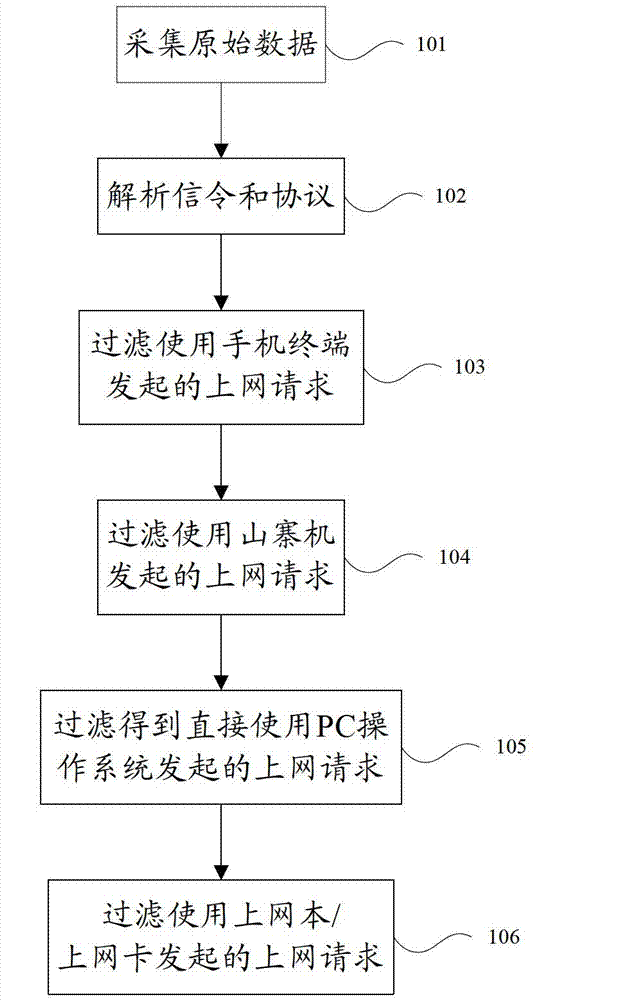Method for identifying internet access of mobile phone through personal computer (PC) based on signaling analysis
A signaling analysis and identification method technology, applied in the field of mobile communications, can solve problems such as inability to obtain terminal models, failure to analyze, and problems with identification accuracy
- Summary
- Abstract
- Description
- Claims
- Application Information
AI Technical Summary
Problems solved by technology
Method used
Image
Examples
Embodiment Construction
[0016] The present invention will be further described below in conjunction with the accompanying drawings and specific embodiments.
[0017] The method for identifying a mobile phone connected to a PC to access the Internet provided by the embodiment of the present invention mainly uses the characteristics of the HTTP protocol in the mobile network, collects the business process of the user's Internet access in the 2 / 3G network, and analyzes and summarizes the User-Agent field in the HTTP protocol. Analyze, and finally determine the type of terminal (mobile terminal, network card, netbook, PC) that initiates the service based on the terminal feature database. If the User-Agent information in the HTTP request submitted by the user using the data service does not include the manufacturer / model / operating system of the mobile phone, the manufacturer / model of the netbook and the network card, and it is not a counterfeit phone, it can be judged that the user is using a mobile phone ...
PUM
 Login to View More
Login to View More Abstract
Description
Claims
Application Information
 Login to View More
Login to View More - R&D
- Intellectual Property
- Life Sciences
- Materials
- Tech Scout
- Unparalleled Data Quality
- Higher Quality Content
- 60% Fewer Hallucinations
Browse by: Latest US Patents, China's latest patents, Technical Efficacy Thesaurus, Application Domain, Technology Topic, Popular Technical Reports.
© 2025 PatSnap. All rights reserved.Legal|Privacy policy|Modern Slavery Act Transparency Statement|Sitemap|About US| Contact US: help@patsnap.com


